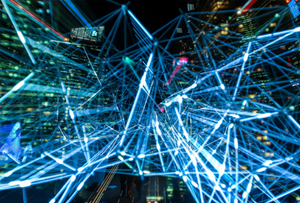![]() 6 minute read
6 minute read
The concept of sustainability serves beyond the efficient usage of spaces and greenery. As the calculation of social loss due to poor psychological wellbeing prove a significant economic impact, architecture and urban design take their place into reaching higher levels of life satisfaction. What are their methods of relieving the stress, improving motivation, and resolving mental problems of city dwellers?
Urban Design for
mental health improvement
Social isolation is a highly prevalent problem in the world – more than 42.5 million adults older than 45 were reported with chronic illness – and is often recalled as an epidemic of the 21st century. This psychological condition has a similar impact on the physical state of smoking 15 cigarettes per day. Changing architectural design and organization of urban spaces is one way to resolve loneliness issue. A new concept of neuro-architecture, integrity of design and psychology, implies that changing urban shapes and patterns have an advantageous impact on the emotional state of city inhabitants. The space design with high visibility and connectivity develops environmental comprehension and entices curiosity and engagement with a place.
Salk Institute was designed to establish the scientific collaborative environment. Luis Kahn, a world-renowned architect, created the mirror-imaged structures that increase the reach of natural light and provide flexible multi-usage of spaces. The feedback is that the campus turned out to be a highly inspiring environment for work and research. Thus, in general, Rounded edges and unique and eye-friendly architectural design are believed to affect one’s wellbeing positively by adding a spark of joy and creativity to one’s life. Meanwhile, taking advantage of open space is an instrument to generate new social values – encourage free communication, relaxation, and freedom of movement in the community.
Urban Spaces to
Facilitate Learning
In addition to public infrastructure, an augmented sense of sustainability is started being implemented in the educational sphere – it is believed to motivate learners to have outstanding academic achievements. For example, according to the University of Illinois Department of Landscape Architecture, students, who had a break in the rooms with the view of trees had 13% higher test results and showed higher stress recovery. A new-fangled concept of green schools implies that students will be engaged with nature, building, and the environment whereas green is utilized to facilitate knowledge acquisition. Embedding ordinary concepts such as energy efficiency in school infrastructure will make building itself a learning tool. Using solar energy to supply the school with power and displaying the acquired data on the monitors can show the benefits of this alternative resource and become a long-term science project. Adding these novelties to school curriculum will insert new eco-friendly habits into students’ daily lives and prepare future graduates to deal with environmental issues and raise a new generation of environmentalists. Combining green and educationally supporting prospects are the definers of the novel educational era whereas sustainability expands its common boundaries – the new époque of sustainable education and psychological architecture is on its way – all newly build school facilities are forecasted to be green by 2025.
New levels of inclusion
The American Institute of Architects defined that architecture could contribute to higher social and environmental integrity and assure safety to all citizens despite their physical or psychological deviations. Currently, failing to address the need for people with disabilities. This has an adverse health effect – cases of depression occur 2-10 times more often among handicapped people. In the recent future, 20% of Singaporean will be older than 60 years, and Singapore Universal Design aims to address this problem and adopts city spaces to the needs of this age group. Already since 2007 Singapore’s Building Construction Authority devoted significant funding to make the life of the elderly and people with disabilities stress-free and convenient – the changes included supplying buildings with sanitary rooms, elevators, and ramps and interactive and easy-to-use navigation systems.
“Accessible City” concept focuses on offering more opportunities to people with physical impairments and implies catering individuals with special psychological needs. Conditions like autism are rather common – 1% of total population is diagnosed with autism – but modern city infrastructure lacks facilities for these people. Individuals with autism are hypersensitive to fast movements and could feel stressed in crowded surroundings. New housing complex Sweetwater Spectrum in Sonoma, California, was created to address this issue and developed a housing site with the autism-friendly environment. It currently consists out of four homes, farm, pools, and community center – it eases living of autists and contributes to their socialization and mental wellbeing. Establishments like Singapore Universal Design and Sweetwater Spectrum are bright examples and inspirations how modifying urban design can be perceived as a way to the future of equal opportunities for all while making living more comforting for people with physical and mental disabilities. Sustainability and inclusivity coexist and are essential parts of the eco-and mentally-friendly design.
According to Mental Health America’s study, 20% of American grown-ups are diagnosed with mental illnesses and 81 million Americans have schizophrenia or bipolar disorder. What is important is that architectural design can be a solution to enhance psychological conditions. Modern architectural trends like green schools, open spaces, and adaption of cities to the needs of disabled individuals not only have a positive impact on mental well-being but also facilitate learning and encourage higher levels of socialization. Sustainability of the city is no longer only a pathway to efficiency, environmental-friendliness and cost-effective solutions. Mental health of city dwellers and stress-free environment become priorities in hectic urban living while adopting urban design to special needs is a natural reaction to the rising significance of inclusivity and aging. The époque of psychologically sustainable architecture is at a sunrise with its slow appearance across the globe.
Empowering the community
BenchesCollective, an open-air project, has neuro-architecture at its core and views buildings as interaction- and idea-exchange facilitators and the way to combat global loneliness pandemic. The space of the movement presents an open-source café consisting out of benches – everyone can become a host of a bench and decide whether to serve special beverages or organize a contest or drawing class. BenchesCollective attracted many followers – more than 1,500 benches were opened internationally since 2014. This project encourages people spending time together, networking, and making new connections – with similar infrastructural modifications, people will become more socially active, and continuous interactions and exciting experiences will improve the mental condition and push the problem of social isolation behind the scenes.




